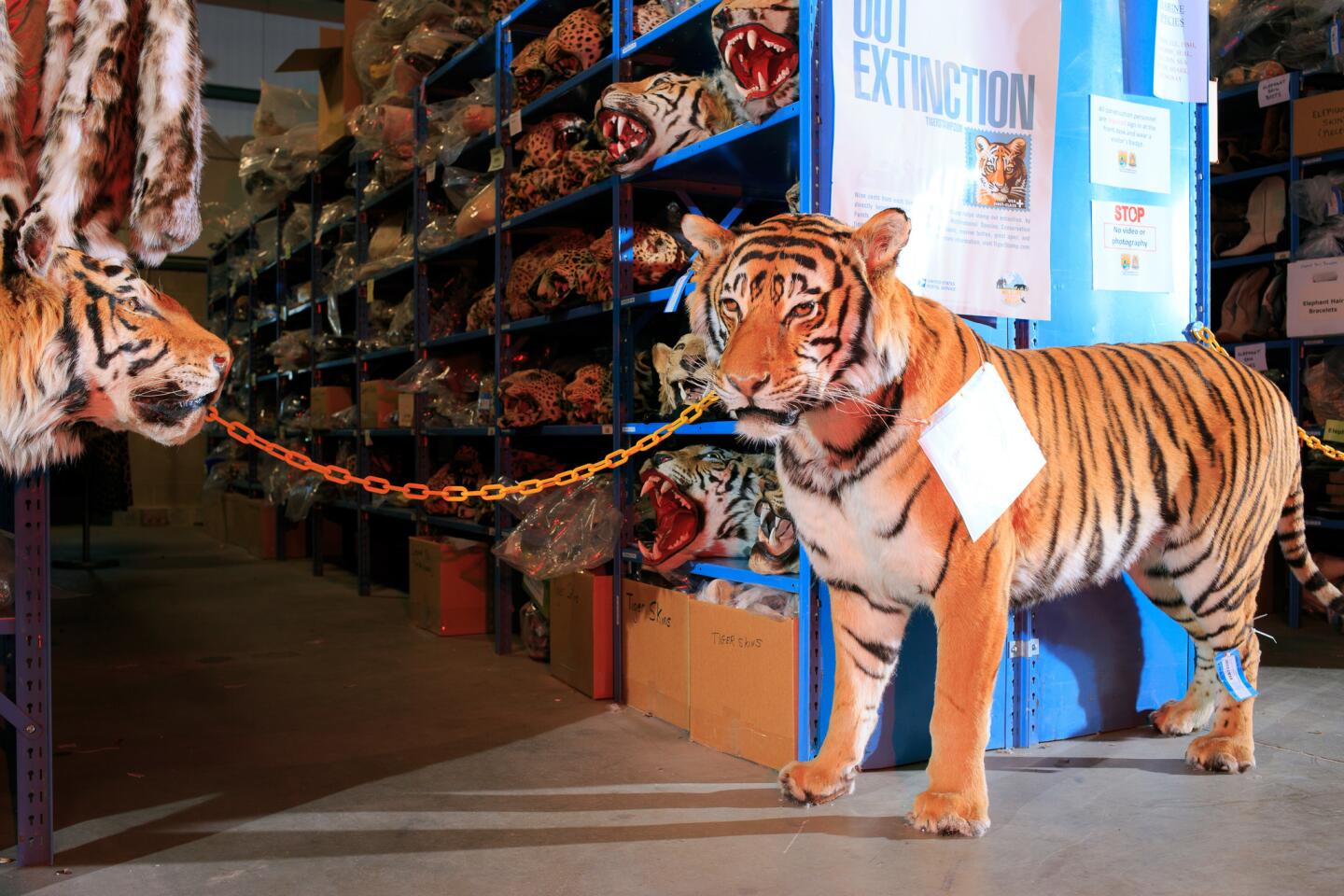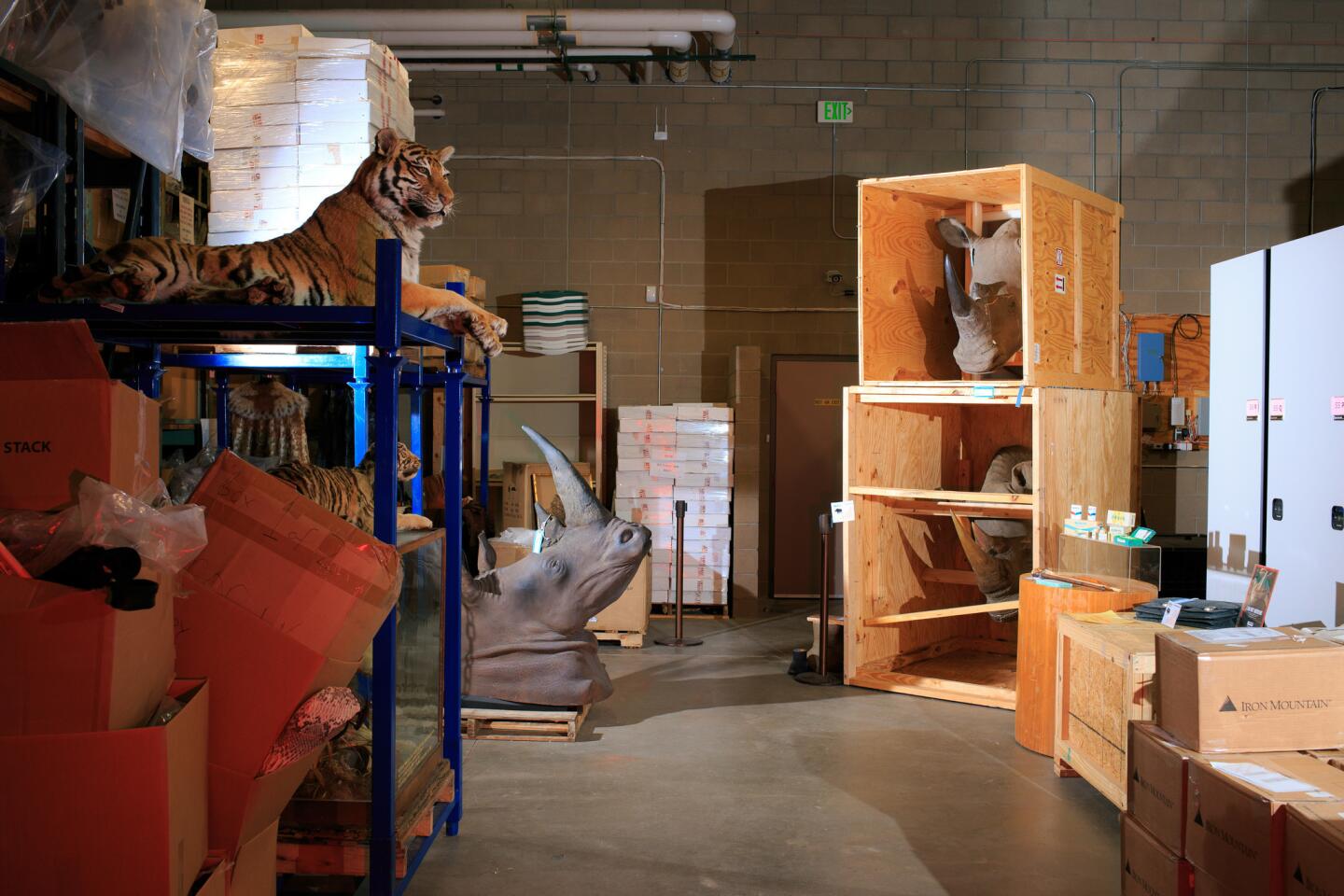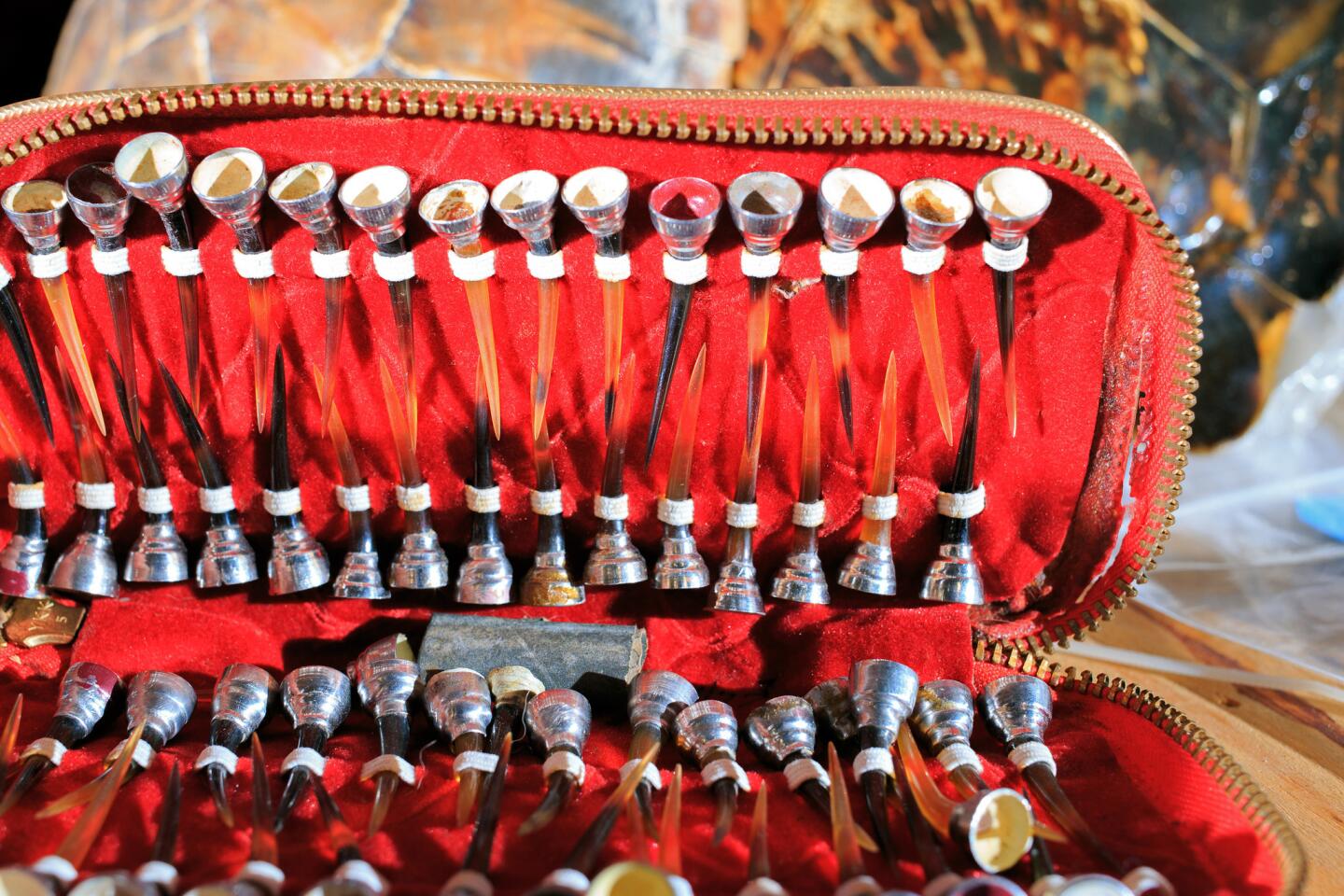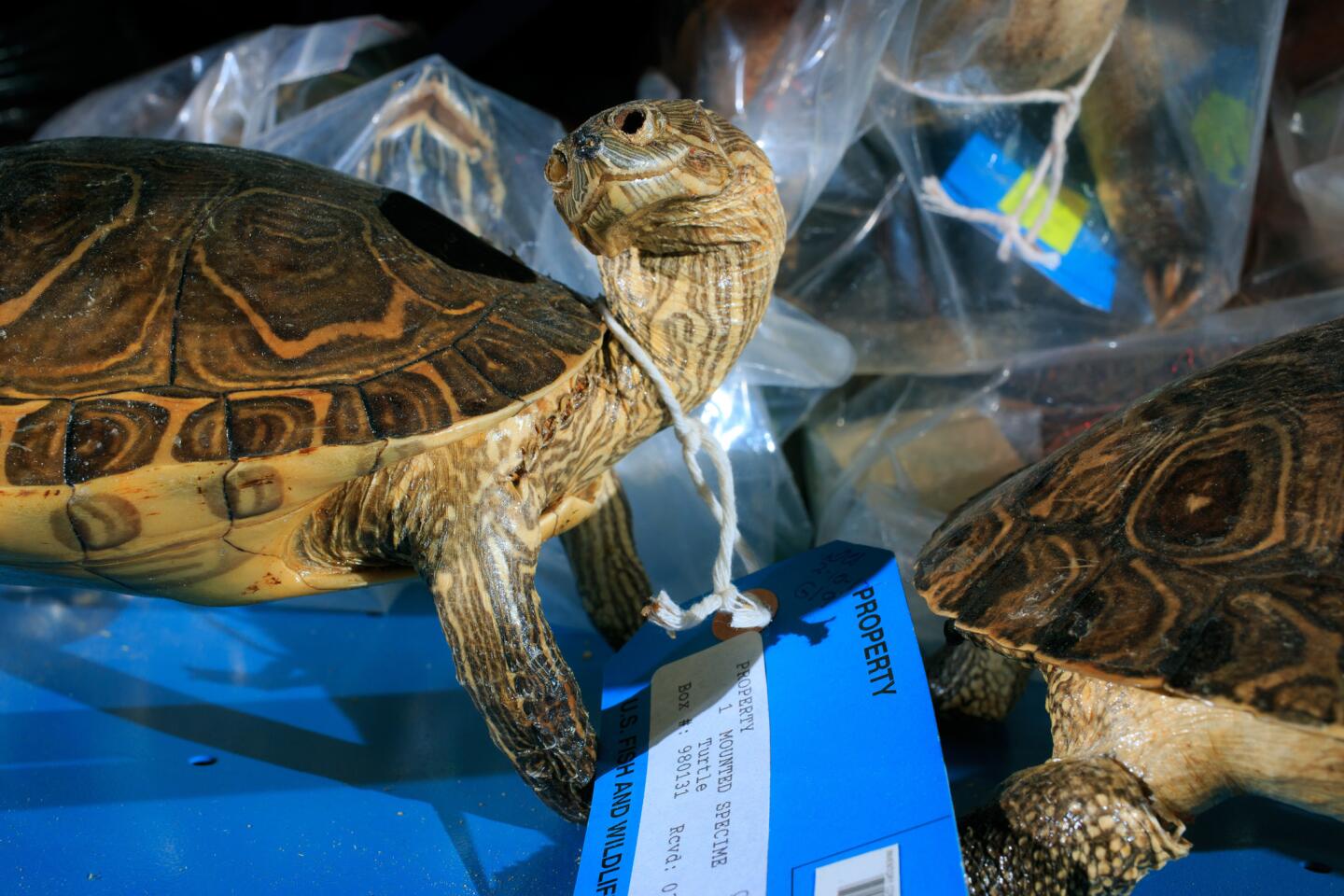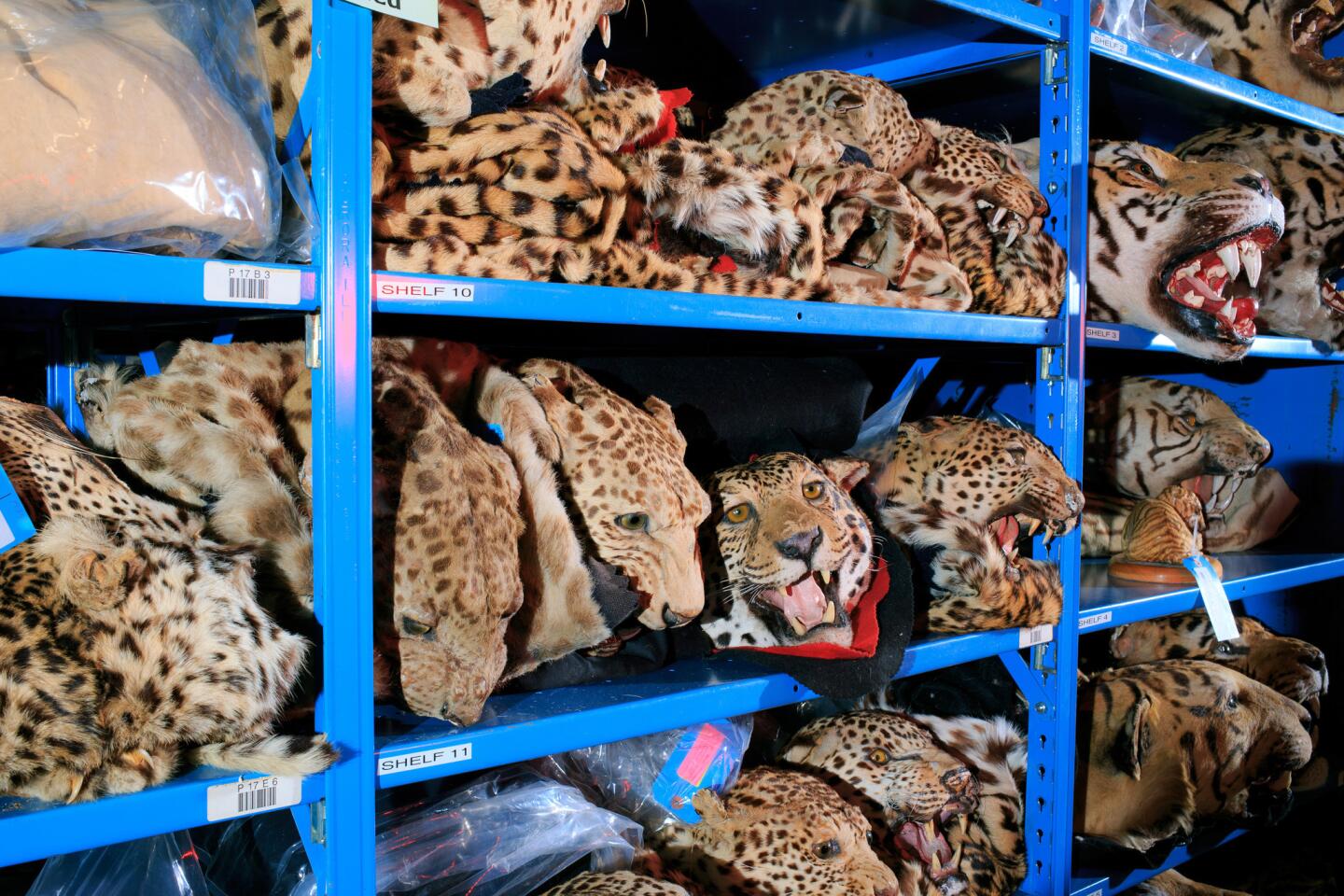Leopards, pythons and zebras turned into potions, boots and lamps. This warehouse holds the grisly goods of an illegal trade
- Share via
Reporting from Commerce City, Colorado — This nondescript warehouse on the outskirts of Denver offers a creepy, deeply macabre view into both the human psyche and the multibillion-dollar illegal wildlife trade.
Tall shelves run the length of the 16,000-square-foot facility laden with animals reduced to potions, powders, boots, belts and trophies.
A snow leopard head peers from inside a plastic bag. A baby rhino foot has been turned into a pencil holder. A python is now a pair of thigh-high boots.
Most disturbing perhaps is a mounted tiger fetus, its tiny ears barely rising above its head. Long dead, it still has a look of despair.
“Even if you don’t find it attractive, somebody does,” said Sarah Metzer, education specialist here at the National Wildlife Property Repository, home to over 1.3 million items seized at ports throughout the nation. “There are many different value systems. But the use doesn’t matter, it’s the impact on the species.”
The repository resides inside the Rocky Mountain Arsenal National Wildlife Refuge northeast of Denver. It’s run by the U.S. Fish & Wildlife Service which receives regular shipments from its agents and inspectors throughout the country. One day it could be a giraffe head, the next a zebra leg lamp. Live animals that are seized are handled elsewhere. The warehouse also holds endangered plant species, including varieties of rosewood.

The wildlife repository, which has been here since 1995, is the only one of its kind. It is used primarily for education, offering a tactile immersion into the dark world of poaching and illegal trafficking. A delegation of African conservation officers visited last year for training in tracking and cataloging products of the illicit trade. Some of the contraband is sent to zoos, science centers and universities.
“My goal is to have people see the sheer volume of what we have here,” Metzer said. “We are not talking about one shark or one turtle. We have 1.3 million items, and that’s just here, and it’s a small fraction of what is seized each year.”
Each port decides what to send to the repository and what to dispose of. Some keep the contraband for their own educational use.
Metzer sees her role as “speaking for animals that don’t have a voice” and hopes the experience of seeing wildlife turned into trinkets might cause people to rethink what they buy.
“We want these animals to have a new life,” she said. “One that connects them to people in a new way.”
But the shipments keep coming. Despite bans on ivory and high-profile public information campaigns, the illegal wildlife trade is booming.
Rachel Kramer, manager of wildlife conservation at the World Wildlife Fund and the wildlife monitoring group TRAFFIC, said such trade is now worth about $20 billion annually. That doesn’t include the up to $23.5 billion a year generated by illegal and unreported fishing and the estimated $100 billion from the illicit timber trade.
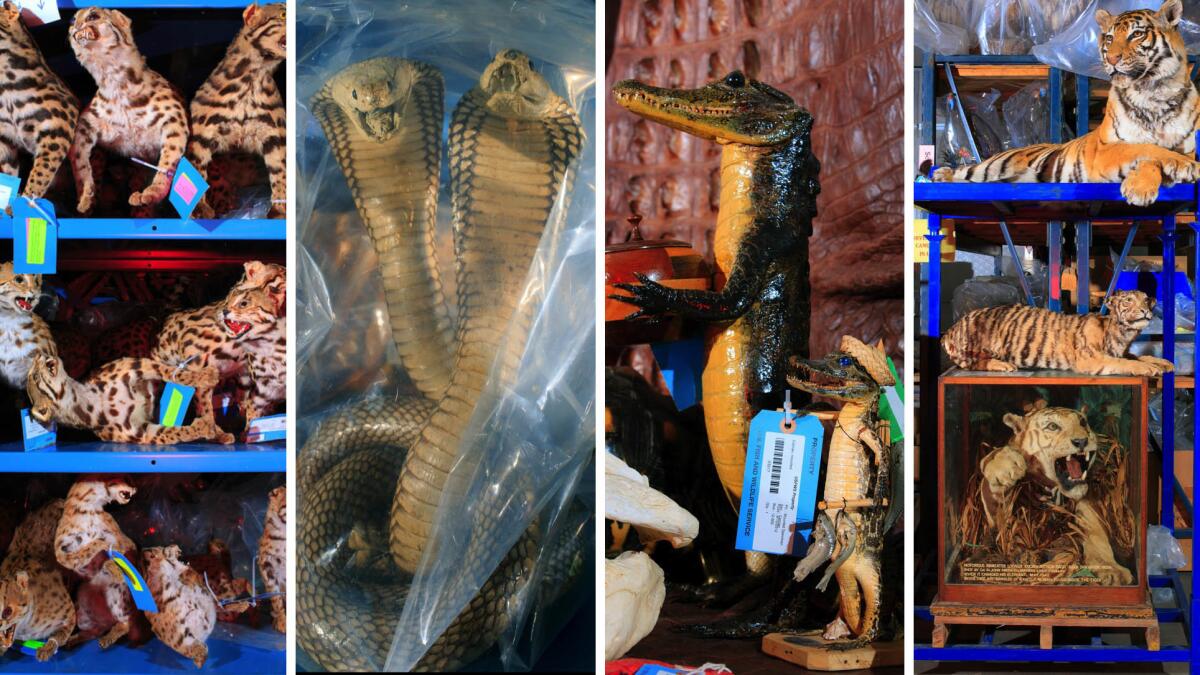
Globalization and growing economies, she said, are driving the increase, along with better transportation links between the wilderness and consumer markets.
“These are huge numbers,” Kramer said. “You don’t see these kinds of illicit flows unless there is organized crime and corruption involved.”
TRAFFIC has reported that “entrenched criminal syndicates of Chinese origin” are active in South Africa manufacturing bracelets, beads, powders and other illegal items from rhino horns and then smuggled out of the country.
Yet while China is a top consumer of rhino horns and other products made from endangered species, the U.S. is also a major market for illegal wildlife.
“The U.S. market is consumer-based, it’s a transit point and a source for certain species, like freshwater turtles,” Kramer said. “A U.S. national was convicted for trafficking in North American box and spotted turtles to Asia. Bear parts are also a problem.”
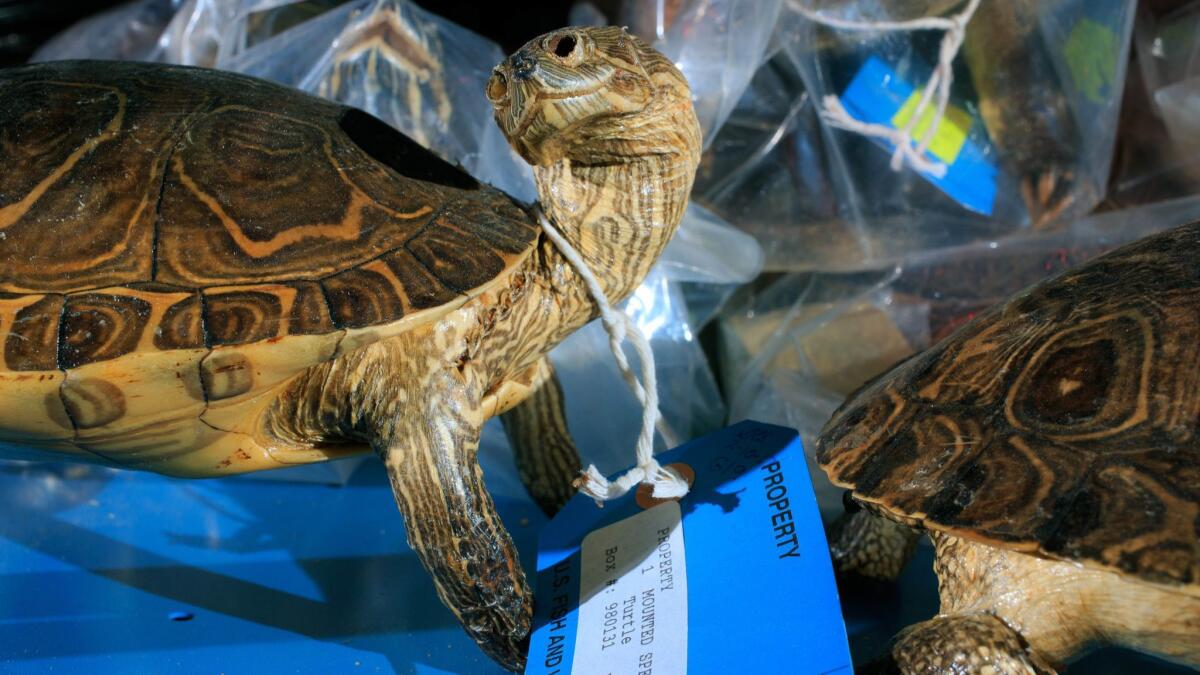
The country is a source nation for black bears, which are poached for their paws and gall bladders.
Metzer walked past a table covered with bear heads to a beautifully crafted Chinese box. Inside were small vials of crystallized bear bile, used in traditional medicine.
There were also packets of powdered seahorses and remedies containing toad venom and leopard bone to “promote blood circulation.” Another box held rhino horn pills that the makers claimed would combat night sweats and laryngitis. (There is little scientific evidence to support the healing properties of any of the products.)
“We are not here to tell people that traditional medicine is wrong; we are here to tell them that the populations of animals are different today,” Metzer said. “There simply aren’t as many as there once were.”
An imposing white rhino head and a footstool made of an elephant foot stood near the back of the warehouse. There were rows of cobra skin boots, swords made from swordfish, cockfighting spurs created from sea turtle shells and bags of pangolin scales.
Pangolins, which slightly resemble small anteaters, are the most trafficked mammals on earth. Despite international bans on their trade, they are widely poached in Asia and Africa for their scales and meat.
“The scales are believed to have medicinal properties,” Metzer said.
The shelves were organized by their contents. One held boxes of elephant parts — tanned elephant skins, elephant tails, elephant hair bracelets and elephant skin shoes.
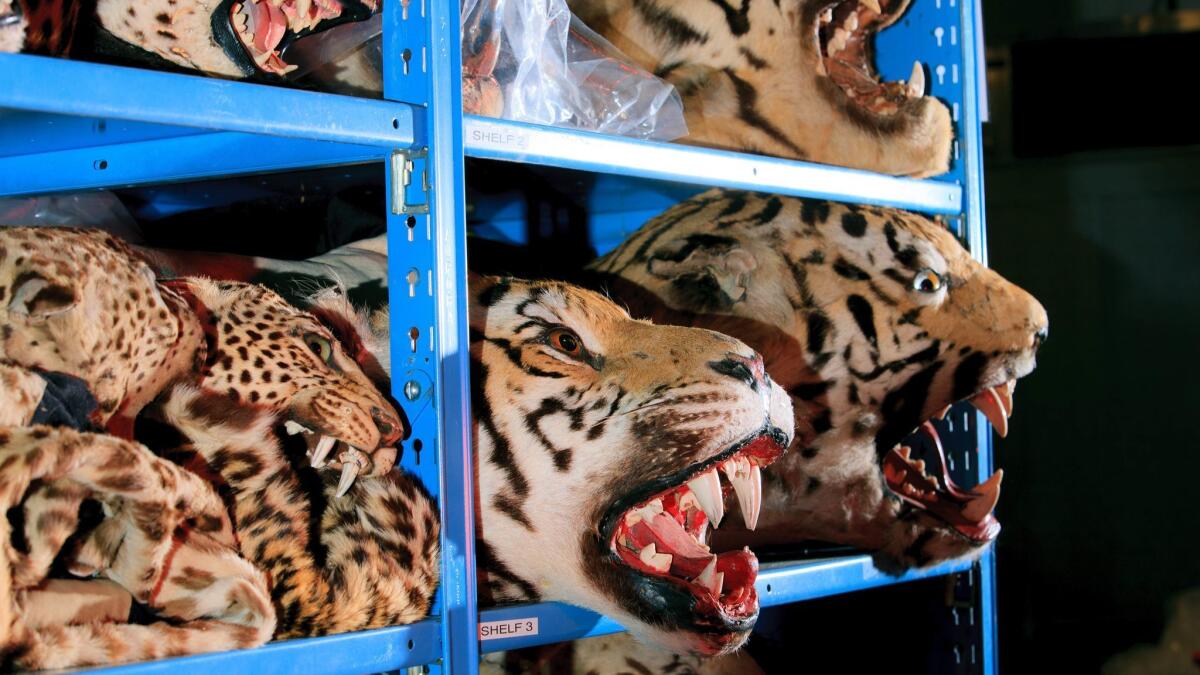
The overall impact of seeing thousands upon thousands of threatened and endangered species transformed into bits and pieces of commerce is numbing. And the way the animals are portrayed in death — the shoddy taxidermy, for instance — makes it even more grotesque.
A row of tiger heads had their mouths twisted in faux snarls. Margays, a small wild cat native to Central and South America, grimaced through broken teeth. Some had crossed eyes.
Metzer offers tours of the facility to the public. She said people are often conflicted when they come in. Some may find a ball-python-trimmed purse fetching while being repulsed by a lion pelt, or vice versa.
“It’s odd what people are attracted to,” she said. “You have pieces of art that are exquisite but the medium is wrong.”
Some of that art is made from the endangered hawksbill sea turtle. They are tagged and bagged in plastic here to protect them from insects. Jewelry boxes made of their luminous shells sit alongside them.
Yet amid this grisly tableau, Metzer finds reason for optimism.
“This warehouse oddly represents hope,” she said. “As macabre as it it seems, without it we would not have the tactile opportunities to see the wildlife trade up close and maybe change attitudes.”
Kelly is a special correspondent.
More to Read
Sign up for Essential California
The most important California stories and recommendations in your inbox every morning.
You may occasionally receive promotional content from the Los Angeles Times.
